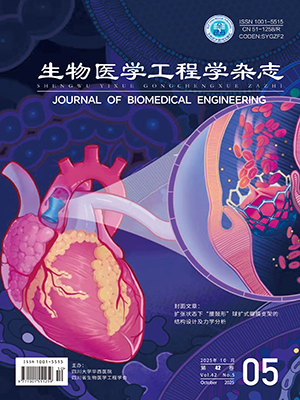| 1. |
Johansenberg H, Behrens T. Diffusion MRI: from quantitative measurement to in vivo neuroanatomy. Second Edition. United State of America , Elsevier science publishers, 2013: 1-614.
|
| 2. |
Mcmillan C T, Avants B B, Cook P, et al. The power of neuroimaging biomarkers for screening frontotemporal dementia. Hum Brain Mapp, 2014, 35(9): 4827-4840.
|
| 3. |
Xu Lele, Wu Xia, Chen Kewei, et al. Multi-modality sparse representation-based classification for Alzheimer's disease and mild cognitive impairment. Comput Methods Programs Biomed, 2015, 122(2): 182-190.
|
| 4. |
O'Dwyer L, Lamberton F, Bokde A L, et al. Using support vector machines with multiple indices of diffusion for automated classification of mild cognitive impairment. PLoS One, 2012, 7(2): e32441.
|
| 5. |
Roher A E, Weiss N, Kokjohn T A, et al. Increased Aβ peptides and reduced cholesterol and myelin proteins characterize white matter degeneration in Alzheimer's disease. Biochemistry, 2002, 41(37): 11080-11090.
|
| 6. |
Zhang Xiaoyuan, Qiu Daoyin, Chen F. Support vector machine with parameter optimization by a novel hybrid method and its application to fault diagnosis. Neurocomputing, 2015, 149(B): 641-651.
|
| 7. |
Prasad G, Joshi S H, Nir T M, et al. Brain connectivity and novel network measures for Alzheimer's disease classification. Neurobiol Aging, 2015, 36(1): S121-S131.
|
| 8. |
Chyzhyk D, Savio A, Grana M. Evolutionary ELM wrapper feature selection for Alzheimer's disease CAD on anatomical brain MRI. Neurocomputing, 2014, 128: 73-80.
|
| 9. |
Moradi E, Pepe A, Gaser C, et al. Machine learning framework for early MRI-based Alzheimer's conversion prediction in MCI subjects. Neuroimage, 2015, 104: 398-412.
|
| 10. |
Li Muwei, Qin Yuanyuan, Gao Fei, et al. Discriminative analysis of multivariate features from structural MRI and diffusion tensor images. Magn Reson Imaging, 2014, 32(8): 1043-1051.
|
| 11. |
Dyrba M, Ewers M, Wegrzyn M, et al. Robust automated detection of microstructural white matter degeneration in Alzheimer's disease using machine learning classification of multicenter DTI data. PLoS One, 2013, 8(5): e64925.
|
| 12. |
Lacalle-Aurioles M, Navas-Sánchez F, Alemán-Gómez Y, et al. The disconnection hypothesis in Alzheimer's disease studied through multimodal magnetic resonance imaging: structural, perfusion, and diffusion tensor imaging. Journal of Alzheimer's Disease, 2016, 50(4): 1051-1064.
|
| 13. |
Dyrba M, Grothe M, Kirste T, et al. Multimodal analysis of functional and structural disconnection in Alzheimer's disease using multiple kernel SVM. Hum Brain Mapp, 2015, 36(6): 2118-2131.
|
| 14. |
Wang Tao, Shi Feng, Jin Yan, et al. Multilevel deficiency of white matter connectivity networks in Alzheimer's disease: a diffusion MRI study with DTI and HARDI models. Neural Plast, 2016, (2): 2947136.
|
| 15. |
Cui Yue, Wen Wei, Lipnicki D M, et al. Automated detection of amnestic mild cognitive impairment in community-dwelling elderly adults: a combined spatial atrophy and white matter alteration approach. Neuroimage, 2012, 59(2): 1209-1217.
|
| 16. |
Jack C R. Alliance for aging research AD biomarkers work group: structural MRI. Neurobiol Aging, 2011, 32(Suppl 1): S48-S57.
|
| 17. |
Dubois B, Feldman H H, Jacova C, et al. Research criteria for the diagnosis of Alzheimer's disease: revising the NINCDS-ADRDA criteria. The Lancet Neurology, 2007, 6(8): 734-746.
|
| 18. |
员锐娟, 吴水才, 林仲志, 等. 基于大脑结构网络特征的遗忘型轻度认知障碍诊断模型. 中国生物医学工程学报, 2014, 33(5): 564-573.
|




